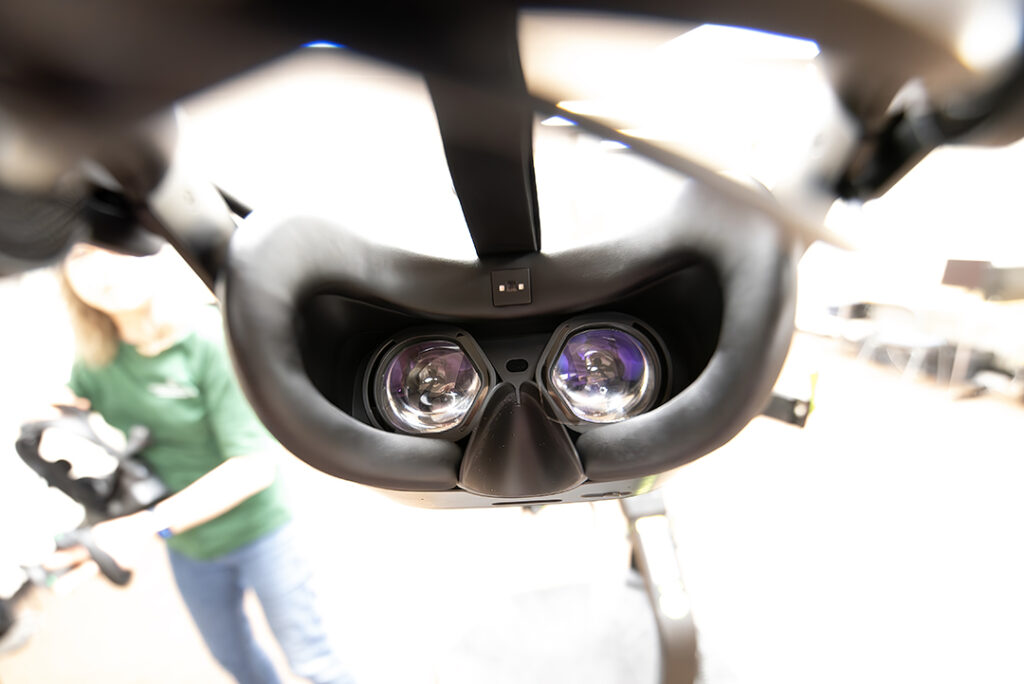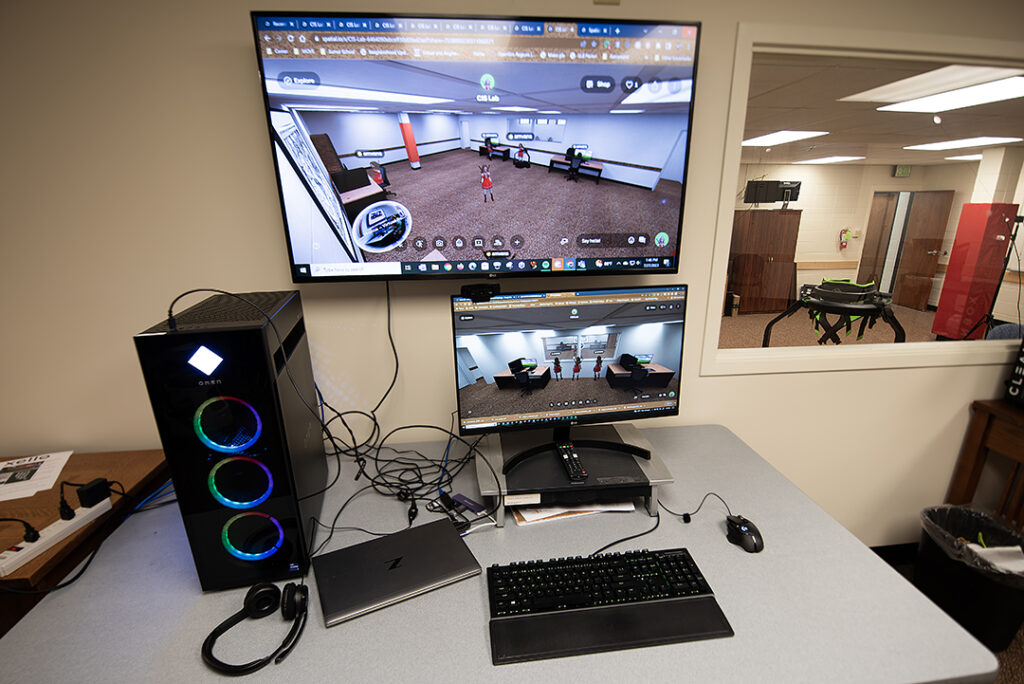Colorado State University houses the Center for Immersive Scholarship (CIS) Lab, a cutting-edge virtual reality & augmented reality (XR) facility in Johnson Hall room 120. This space presents a wealth of resources and opportunities for students and researchers alike. At the XR-CIS Lab, individuals interested in XR can delve into learning, experimentation, and playful exploration of XR technologies. The lab’s mission revolves around four pillars: Research, immersive learning, partnerships, and serving as an XR demonstrator, aiming to lead the way in the exciting realm of XR advancements. The following represents the top 10 things worth knowing about the lab.
1. The XR-CIS Lab primarily studies education in immersive simulations but is not limited to that research!

The XR-CIS Lab is headed by associate professor Marie Vans from the CSU Department of Systems Engineering. Vans and her team of researchers primarily develop and test immersive educational simulations in the fields of medical and veterinary service delivery. The lab is not limited to educational XR research, as Vans is always open to collaborations and new ideas!
2. XR education is more efficient and creative.

Virtual spaces offer cost-effective and efficient solutions for learning to use rare and expensive technologies, which means they can help preserve valuable resources. According to Vans, XR can also make learning more creative and effective, helping teachers adjust to students learning differences in ways previously unimagined. Finally, it can improve the safety of training for otherwise dangerous and risky jobs.
3. XR offers academics new opportunities for research.

Most of the old questions of experiential engineering and educational psychology can be asked anew through the XR lens, Vans said. Digital engineers can reform existing methods and structures by bypassing conventional limitations and questioning established assumptions. XR research is inherently multidisciplinary, complex, and transformative.
“If you want to build a fully functional XR system, you need to assemble an interdisciplinary team,” Vans said. “That includes writers, artists, audio and media engineers, computer scientists, domain experts, and systems engineers to pull it all together.”
4. Two key things we’ve learned so far from the XR-CIS Lab: In the area of immersive education, we need a desktop version, and it should be multiplayer.

Vans said educational VR spaces need to include: (1) A desktop option, and (2) Multiplayer functionality. About 30% of XR-CIS lab visitors face physical discomfort with VR goggles, making it essential to design inclusive simulations. Moreover, for virtual reality to be truly effective, it should prioritize multiplayer settings, enabling seamless global collaboration and instruction.
5. The lab’s transformative VetVR project helps students gain highly marketable skills.

Evan Corwin, a first-generation biomedical and electrical engineering student at CSU, was a member of the Scott Undergraduate Research Experience (SURE) program with Vans as his mentor. In collaboration with faculty researchers, Corwin is developing a virtual simulation of an animal hospital. This project aims to revolutionize veterinary education by providing veterinary students with the opportunity to learn core procedures through immersive virtual reality experiences. Alongside Corwin, Valentina Diaz, an electrical and computer engineering student who was also a SURE student, contributes to the Vet VR lab by studying and enhancing the movements of animal simulations. Together, they are advancing augmented realities and virtual procedures that could help to transform the field of veterinary education. Vans hired Corwin and Diaz for summer internships working on the project, demonstrating how SURE can lead to exciting opportunities for First Generation students.
6. Vans teaches graduate courses in XR development, research, and design. Often, she does so while in a VR simulation!

Vans teaches several courses in XR design and research. For example, SYSE-581A1 “AR/VR Environmental Realism for SE” is the first of a two-course series that teaches students how to create environmental realism in AR/VR spaces. The project students propose in this course can be implemented in the second course. Vans said she plans to instruct her classes in a VR classroom. For a complete list of courses offered in the SE department, visit this site. (Note: SYSE-581A1 is scheduled to change names in Fall 2023 to SYSE 544 “Systems-Based AR/VR Environmental Realism.”)
7. The lab space is available for CSU research studies.

The lab consists of two rooms that can be scheduled for use here. Simply visit this website, book a time, and send the lab a message. The larger room is equipped with pads to protect users who are walking around while immersed in VR. It is clearly visible via internal windows from the control room. The control room houses computers and features a highly accurate digital twin.
8. CSU researchers can checkout equipment.

The VR equipment in the lab is available for CSU researchers to check out and use. As with above, simply visit this website, book a time, and send the lab a message. Unavailable times will be grayed out. Equipment includes Oculus VR goggles, hand controllers, a VR treadmill, and stationary computers with immersive software. For a more complete list of available equipment, contact Vans. The lab is always in the process of updating and replacing equipment.
9. Tour groups often visit the lab to experience VR first-hand, and so can you!

Vans and her team regularly lead tours through the lab, ranging from K-12 students to fellow researchers and peers. You can request a tour using the same link as above. It is important to contact the lab in advance to better plan the visit.
10. In the XR-CIS Lab, graduate students execute practical projects in their unique areas of expertise.

In Spring 2023, Kulbir Sandhu, a doctoral student in systems engineering, developed a virtual reality space for training medical students, radiation therapists, and field service engineers in the use and servicing of medical linear accelerators (LINACs). LINACs are used to target cancer cells with pin-point destructive radiation. They are scarce, in high-demand, and expensive to use for training purposes. Sandhu’s company manufactures these machines, and his VR space aims to enhance patient outcomes and reduce healthcare costs through multiplayer collaboration and accurate treatment delivery. The VR simulation is accessible through both keyboard and Oculus VR Quest headset. Sandhu’s work is just one of many projects that could help initiate a revolution in technical training.
“In 2022, the word of the year was ‘Metaverse.’ Many people do not understand what that means, picturing a ‘Ready Player Me’ type world,” Vans said. “In fact, globally connected spaces already exist where we can be immersed together synchronously for learning, training, and collaboration.”